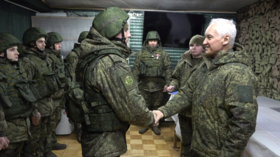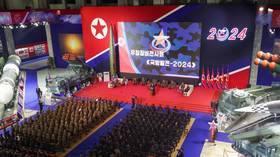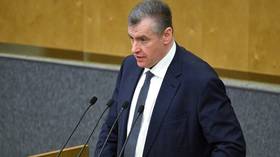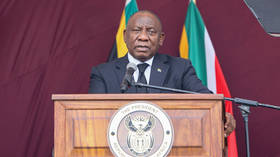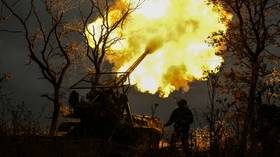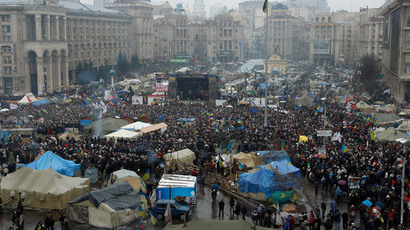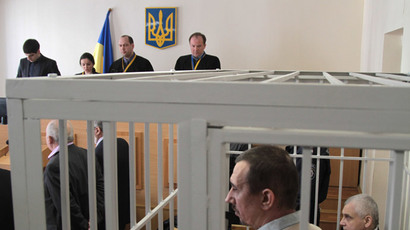15 terrifying images which show that Kiev is a real warzone
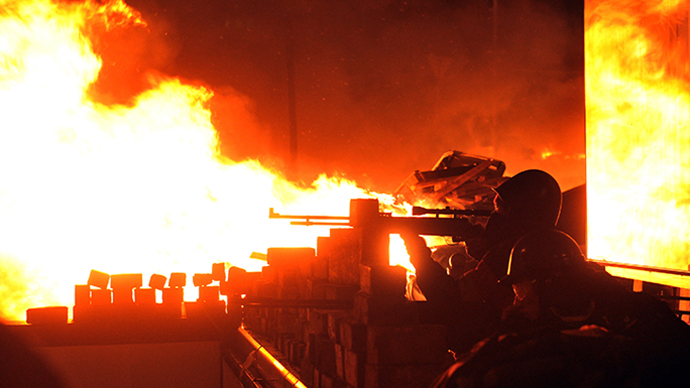
Corpses on the streets, burning police trucks and military-clad rioters beating law enforcement officers to death with clubs. Out of control, armed to the teeth, they are literally turning Kiev into a warzone.
Molotov cocktails and cobble stones mainly make up the arsenal of hardline rioters.

At first sight this may look amateurish compared to the police officers’ equipment, but the effect it causes is devastating.
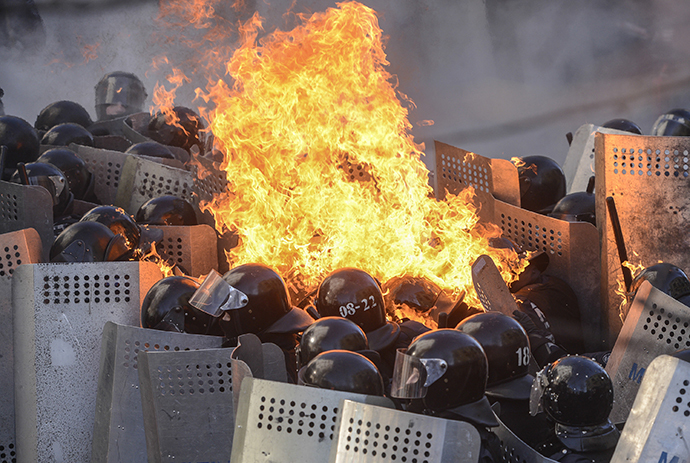
Rioters feed burning flames with tires, and there seems no shortage of this “rubber fuel.”
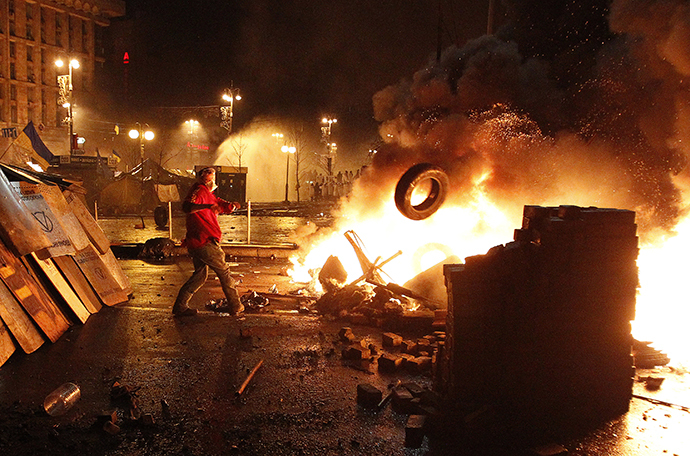
Dressed in camouflage, the radicals represent the far-right wing of the Ukrainian opposition. They follow the ultra-right ideology of nationalistic organizations…
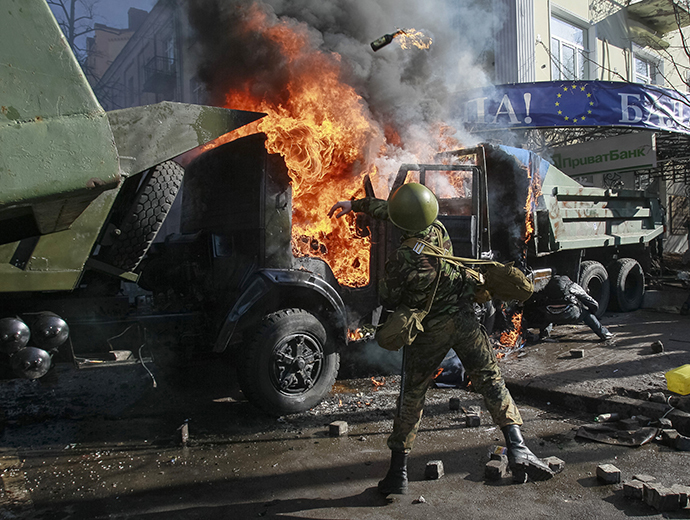
… and the tactic. The way ultras treat their opponents is anything but peaceful.
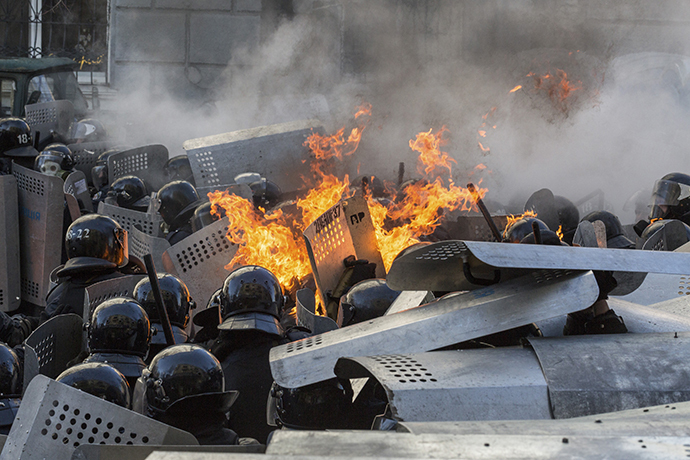
They attack from everywhere. Hurl everything they find, debris, construction materials.
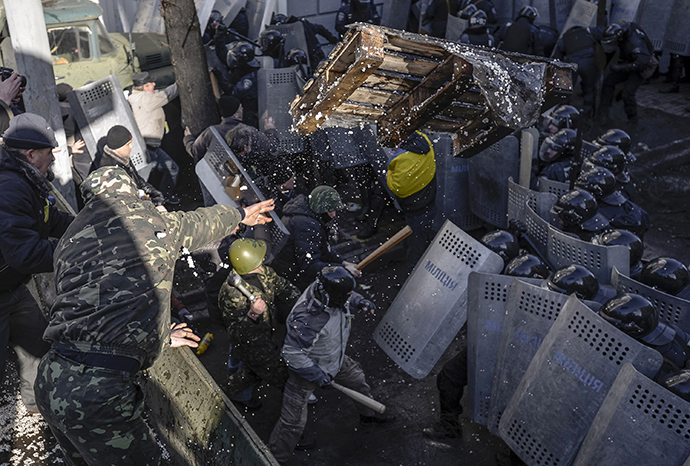
Police takes cover behind shields.
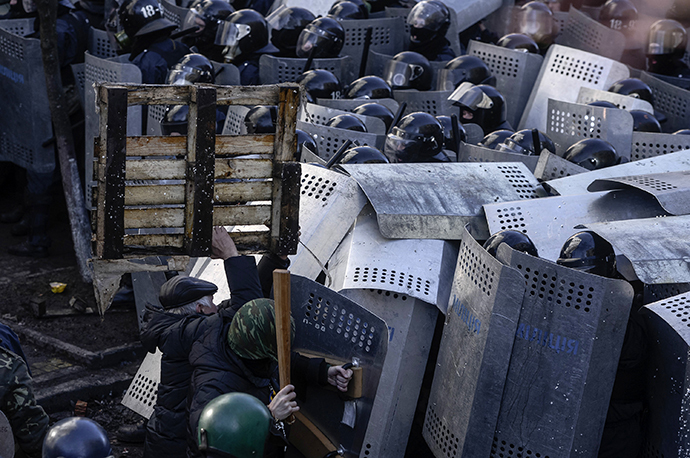
Law enforcement officers respond to the violence by beating and detaining rioters.
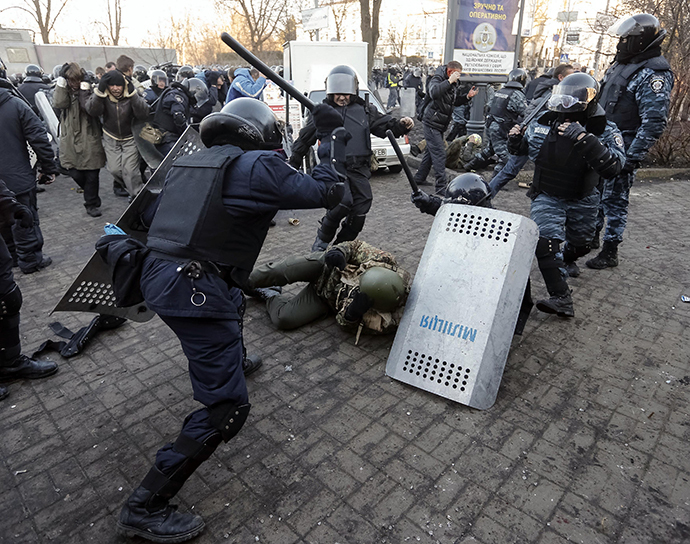
Protesters also use shields, either handmade or obtained from police.

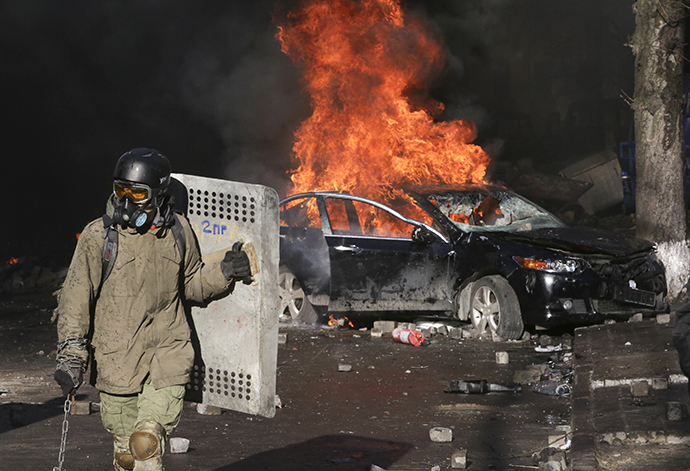
This picture may look like a celebration, but it is not. Fireworks are also extensively used against the police.
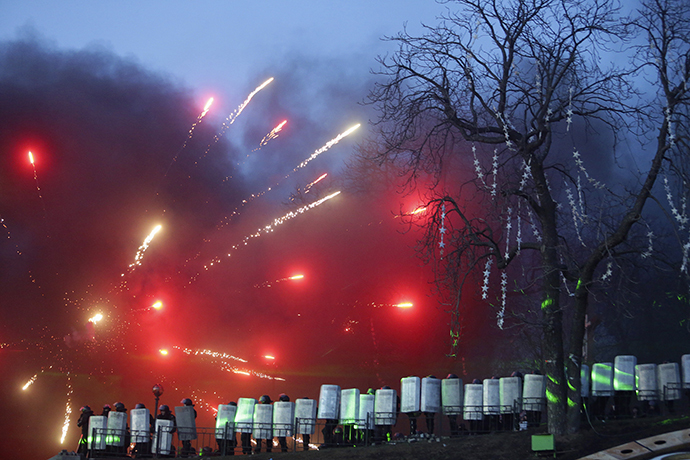
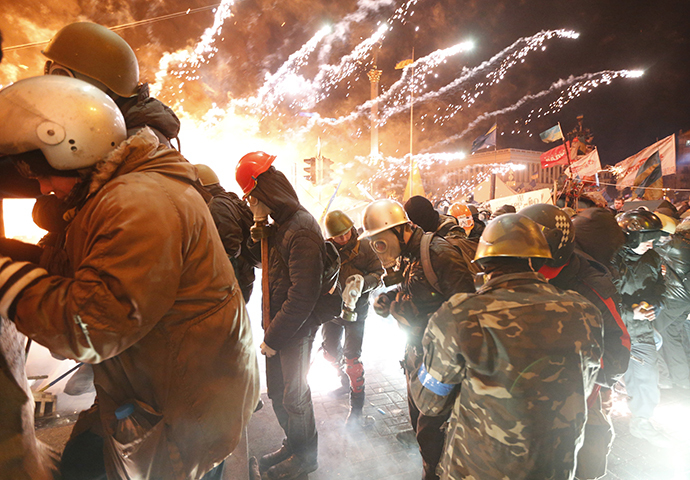
The past two days have become the deadliest and the bloodiest for Kiev, since at first peaceful protests started in November. So far, 26 have been killed, including 10 police officers.
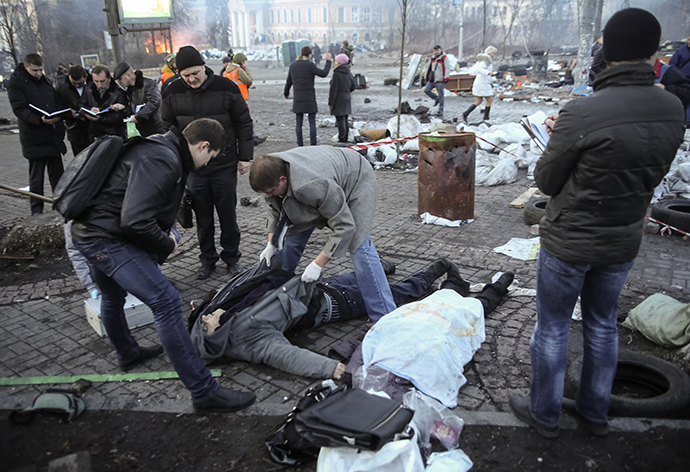
On Wednesday morning Kiev woke up in ruins. These pictures of the city are barely reminiscent of a successful, tourist friendly capital.
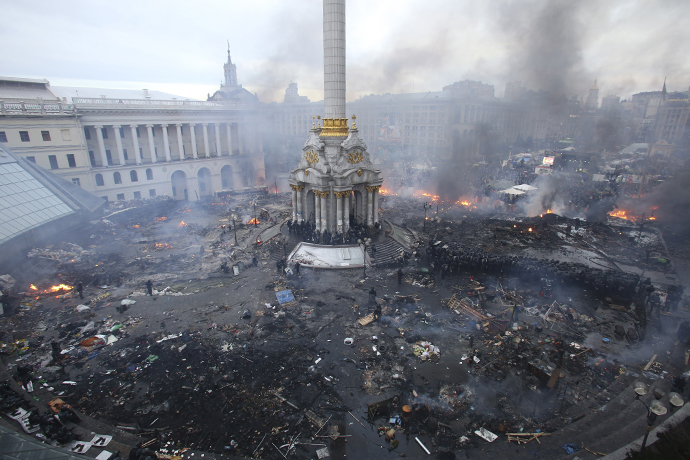

Ukraine's President Viktor Yanukovich and opposition leaders have so far been unable to reach an agreement to end the violence. The opposition leaders are refusing to condemn the bloodshed, but are calling on their adherents to refrain from radical actions.
But even if any agreement between the Ukrainian opposition and the government is reached, the official leaders of the opposition are extremely unlikely to persuade the insurgent nationalists to lay down arms, stop mutiny and return to the poverty-stricken western regions of Ukraine, where they mostly came from.



